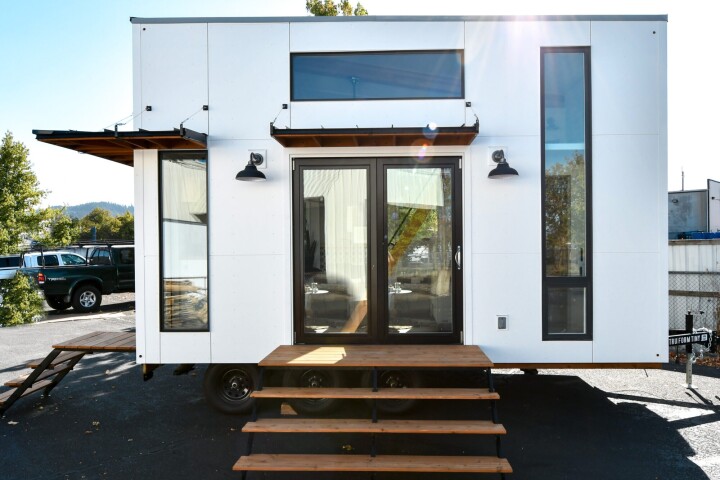Back in 1967, California-based Gyro Transport Systems built a prototype vehicle known as the Gyro-X. The automobile had just two wheels, one in front and one in the back and, as the car’s name implies, it utilized a built-in gyroscope to remain upright when not moving. Although its developers hoped to take the Gyro-X into production, the company went bankrupt, and the one-and-only specimen of the car became an orphan. For much of the past 40-plus years, that car has passed from owner to owner, its condition deteriorating along the way. Now, it’s about to be restored to its former (weird) glory.
The single-seat Gyro-X was created by renowned industrial designer Alex Tremulis, who was contracted by Gyro Transport Systems. He had previously designed vehicles (the four-wheeled variety) for the likes of Cord Automobile, Duesenberg, General Motors, Tucker Car Corporation and Ford – where he worked as Chief of Advanced Styling.
According to an article in the September 1967 issue of Science & Mechanics, the finished car could reach a top speed of 125 mph (201 km/h), and could swoop through 40-degree banked turns without tipping. It weighed in at 1,850 pounds (839 kg), measured 47 inches (119 cm) in height, just 42 inches (107 cm) in width, and 15 feet, 5 inches (4.7 meters) in length. It rolled on two 15-inch wheels, and was powered by a small 80-horsepower engine.
Its single 20-inch hydraulically-driven gyroscope – developed by noted “gyrodynamist” Thomas O. Summers Jr. – spun at up to 6,000 rpm, creating 1,300 foot pounds (1,763 Nm) of torque. It did take approximately three minutes to build up to that speed, however, meaning that drivers couldn’t just get in and go. A set of training wheel-like retractable outriggers held the car up in the meantime.

While it isn’t known exactly what became of the Gyro-X immediately after Gyro Transport Systems closed its doors, the car was recently acquired by the Lane Motor Museum in Nashville ... and it’s seen better days. As can be seen in a YouTube video posted by Nevada-based past owner John Windsor, its gyro is long-since gone, and the car is now held up by added-on dual rear wheels. Windsor acquired the car in 2008, sold it to Texas-based auto collector Mark Brinker, who in turn sold it to the museum.
Tremulis would be turning 100 next January 23rd. In honor of his centenary, the museum has begun restoring the Gyro-X to like-new condition, in hopes of taking it to auto shows next year.
Part of the project will involve rebuilding its rear end, replacing the two back wheels with one, as per its original configuration. The missing gyroscope also has to be rebuilt from scratch. To handle that end of things, the museum has enlisted the services of Thrustcycle Enterprises – a company that is currently developing its own modern gyroscopically-stabilized two-wheeled vehicle, known as the SRT. Thrustcycle will also be tasked with rebuilding the controls and outriggers.

Experimental gyro cars have been around since at least 1914, and thanks to modern technology, we may yet see one reach production – along with the SRT, the Lit Motors C-1 is also currently in development. Still, given how long people have been dabbling with them, the question of why haven’t they ever caught on needs to be asked.
“The gyro people, their thing was that the cars were going to be narrower, they were going to take up half as much room – they’d be more fuel-efficient, they’d be safer because it would be very difficult to flip them over,” explained Jeff Lane, director of the Lane Motor Museum. “The ideas were good, but I think in reality the gyroscopic part of it was very complicated and fairly expensive ... it always works out on paper, but it doesn’t always work out in the workshop. It’s a very obscure, weird part of history, but it’s also a very interesting part of history.”
Some rare footage of the Gyro-X being driven can be seen in the video below.
All photos courtesy Steve Tremulis
Source: Thrustcycle Enterprises














